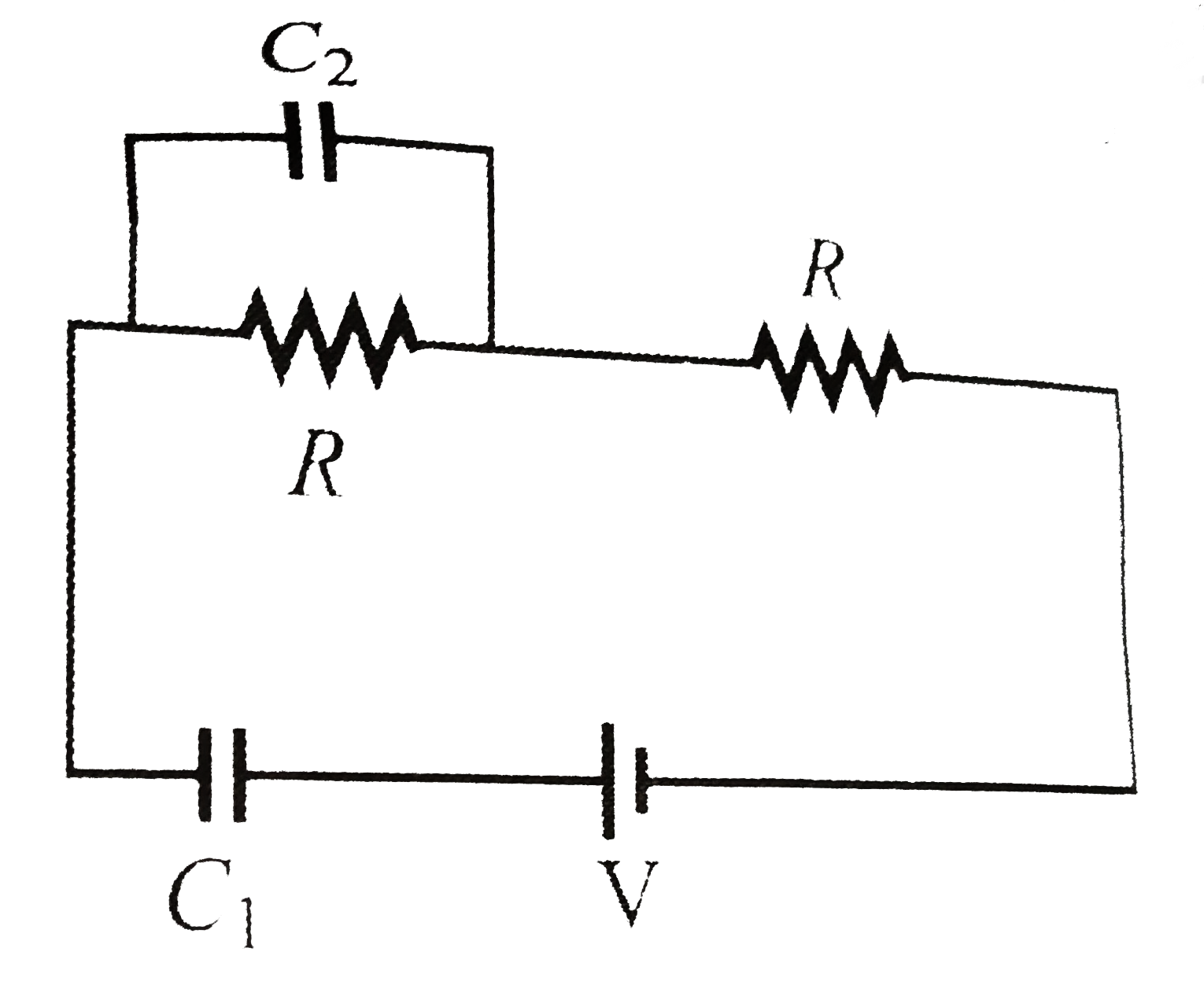Assertion: Increasing the charge on the plates of a capacitor means increasing the capacitance.
Resion : Capacitance is directly proportinal to charge.
If both assertion and reason are ture and reason is the correct explanation of assertion.
If both assertin and reason are ture but reason is not the correct explanation of assertion .
If assertion is true but reason is false.
If both assertion and reason are false.
The correct Answer is:D
To solve the question, we need to analyze the assertion and reason given regarding the relationship between charge, capacitance, and the physical characteristics of a capacitor.
1. Understanding Capacitance:
- Capacitance (C) is defined as the ability of a capacitor to store charge (Q) per unit voltage (V). The formula for capacitance is:
C=QV
- This means that capacitance is determined by the physical characteristics of the capacitor, such as the area of the plates (A), the distance between the plates (d), and the dielectric material between the plates.
2. Assertion Analysis:
- The assertion states that "increasing the charge on the plates of a capacitor means increasing the capacitance."
- According to the formula C=QV, if we increase the charge (Q) while keeping the voltage (V) constant, capacitance (C) does not change because it is a property of the capacitor itself.
3. Reason Analysis:
- The reason states that "capacitance is directly proportional to charge."
- This statement is incorrect. Capacitance is not directly proportional to charge; it is a function of the physical characteristics of the capacitor. Charge and voltage are related, but capacitance remains constant for a given capacitor under fixed physical conditions.
4. Conclusion:
- Since both the assertion and the reason are incorrect, we conclude that:
- Assertion: Incorrect
- Reason: Incorrect
- Therefore, the correct answer is that both the assertion and reason are wrong.
Final Answer:
Both the assertion and reason are incorrect.
- Capacitance (C) is defined as the ability of a capacitor to store charge (Q) per unit voltage (V). The formula for capacitance is:
C=QV
- This means that capacitance is determined by the physical characteristics of the capacitor, such as the area of the plates (A), the distance between the plates (d), and the dielectric material between the plates.
- The assertion states that "increasing the charge on the plates of a capacitor means increasing the capacitance."
- According to the formula C=QV, if we increase the charge (Q) while keeping the voltage (V) constant, capacitance (C) does not change because it is a property of the capacitor itself.
- The reason states that "capacitance is directly proportional to charge."
- This statement is incorrect. Capacitance is not directly proportional to charge; it is a function of the physical characteristics of the capacitor. Charge and voltage are related, but capacitance remains constant for a given capacitor under fixed physical conditions.
- Since both the assertion and the reason are incorrect, we conclude that:
- Assertion: Incorrect
- Reason: Incorrect
- Therefore, the correct answer is that both the assertion and reason are wrong.
Both the assertion and reason are incorrect.
Topper's Solved these Questions
- BOOK - NCERT FINGERTIPSCHAPTER - ELECTROSTATIC POTENTIAL AND CAPACITANCE EXERCISE - NCERT Exemplar6videos
ELECTROSTATIC POTENTIAL AND CAPACITANCE
- BOOK - NCERT FINGERTIPSCHAPTER - ELECTROMAGNETIC WAVESEXERCISE - Assertion And Reason15videos
ELECTROMAGNETIC WAVES
- BOOK - NCERT FINGERTIPSCHAPTER - MAGNETISM AND MATTER EXERCISE - Assertion And Reason15videos
MAGNETISM AND MATTER
Similar Questions
Knowledge Check
- Question 1 - Select One
Assertion: Charge on all the condensers connected in series in the same.
Reason : Capacitance of capacitor is directly proportional to charge on it.AIf both assertion and reason are ture and reason is the correct explanation of assertion.BIf both assertin and reason are ture but reason is not the correct explanation of assertion .CIf assertion is true but reason is false.DIf both assertion and reason are false. - Question 2 - Select One
If we increases the distance between two plates of the capacitor, the capacitance will.
AdecreaseBremain sameCincreaseDfirst decrease then increase - Question 3 - Select One
Assertion: Id distance between the parallel plates of a capacitor is halved, then its capacitance is doubled.
Reason: The capacitance depends on the introduced dielectric.AIf both assertion and reason are ture and reason is the correct explanation of assertion.BIf both assertin and reason are ture but reason is not the correct explanation of assertion .CIf assertion is true but reason is false.DIf both assertion and reason are false.
If the charge on a capacitor is doubled, the value of its capacitance will be
View SolutionIn a parallel plate capacitor, the capacitance
View SolutionThe capacitance of a parallel plate capacitor can be increased by
View SolutionCharge on the capacitor having capacitance C2 in steady state is
 View Solution
View SolutionCapacitance of a parallel plate capacitor can be increased by
View Solution

